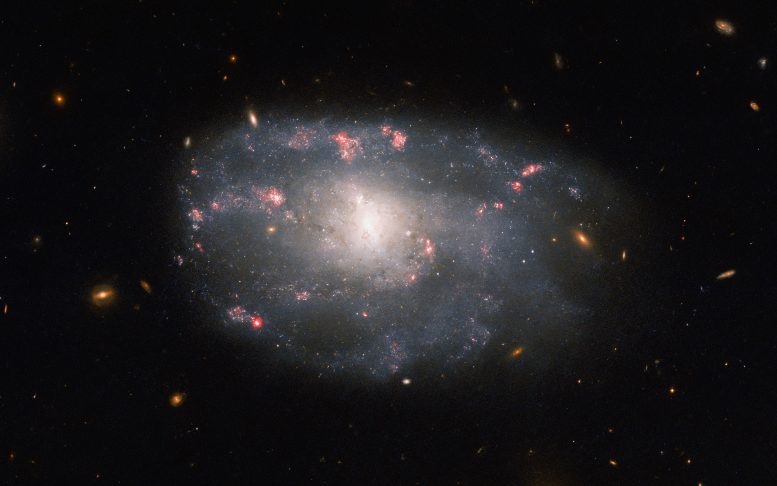
Hubble Space Telescope image of the irregular spiral galaxy NGC 5486 against a background of dim, distant galaxies. Credit: ESA/Hubble & NASA, C. Kilpatrick
In this image from the Hubble Space Telescope, the irregular spiral galaxy NGC 5486 hangs against a background of dim, distant galaxies. The tenuous disc of the galaxy is threaded through with pink wisps of star formation, which stand out from the diffuse glow of the galaxy’s bright core. While this particular galaxy has indistinct, meandering spiral arms it lies close to the much larger Pinwheel Galaxy, one of the best-known examples of ‘grand design’ spiral galaxies with prominent and well-defined spiral arms.
In 2006 Hubble captured an image of the Pinwheel Galaxy which was — at the time — the largest and most detailed photo of a spiral galaxy ever taken with Hubble (see image below).
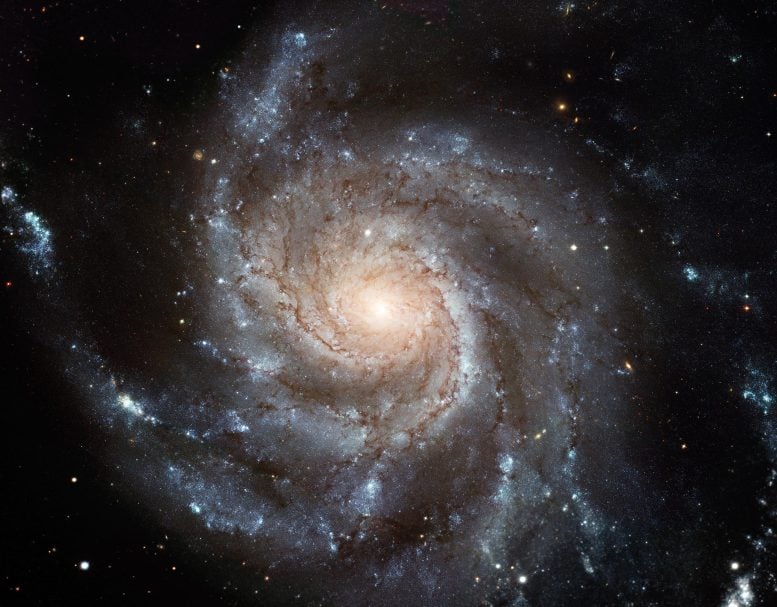
This Hubble image reveals the gigantic Pinwheel galaxy, one of the best-known examples of “grand design spirals,” and its supergiant star-forming regions in unprecedented detail. The image is the largest and most detailed photo of a spiral galaxy ever taken with Hubble. Credit: European Space Agency & NASA
NGC 5486 lies 110 million light-years from Earth in the constellation Ursa Major. Constellations are not only patterns of bright stars, but also a system that astronomers use to divide the sky into regions. There are 88 of these regions, and each has an associated constellation depicting a mythological figure, an animal, or even an item of scientific equipment. This strange celestial menagerie contains everything from Ursa Major’s great bear to a toucan, a sea monster, a telescope, and even a painter’s easel!
Ursa Major, or the Great Bear, is a constellation in the northern sky that is visible throughout the year from most parts of the northern hemisphere. Its main pattern consists of seven bright stars that form the shape of a dipper or a saucepan, known as the Big Dipper or the Plough. The seven stars are named Alkaid, Mizar, Alioth, Megrez, Phecda, Merak, and Dubhe. The constellation also contains several other notable stars and objects, including binary stars, star clusters, and galaxies. Alioth is the brightest star in Ursa Major, while the Whirlpool Galaxy is a famous spiral galaxy located near the border with Canes Venatici. Ursa Major is one of the oldest known constellations, with a history dating back to ancient times.
This observation comes from a selection of Hubble images exploring the detritus left behind by Type II supernovae. As massive stars reach the end of their lives they cast off huge amounts of gas and dust before ending their lives in titanic supernova explosions. NGC 5486 hosted a supernova in 2004, and astronomers used the keen vision of Hubble’s Advanced Camera for Surveys (ACS) to explore the aftermath in the hopes of learning more about these explosive events.


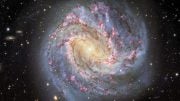


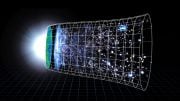
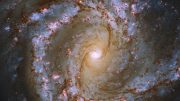
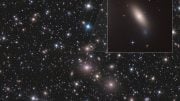
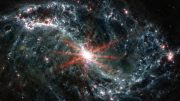
Be the first to comment on "Hubble Spies a Mesmerizing Meandering Spiral Galaxy"